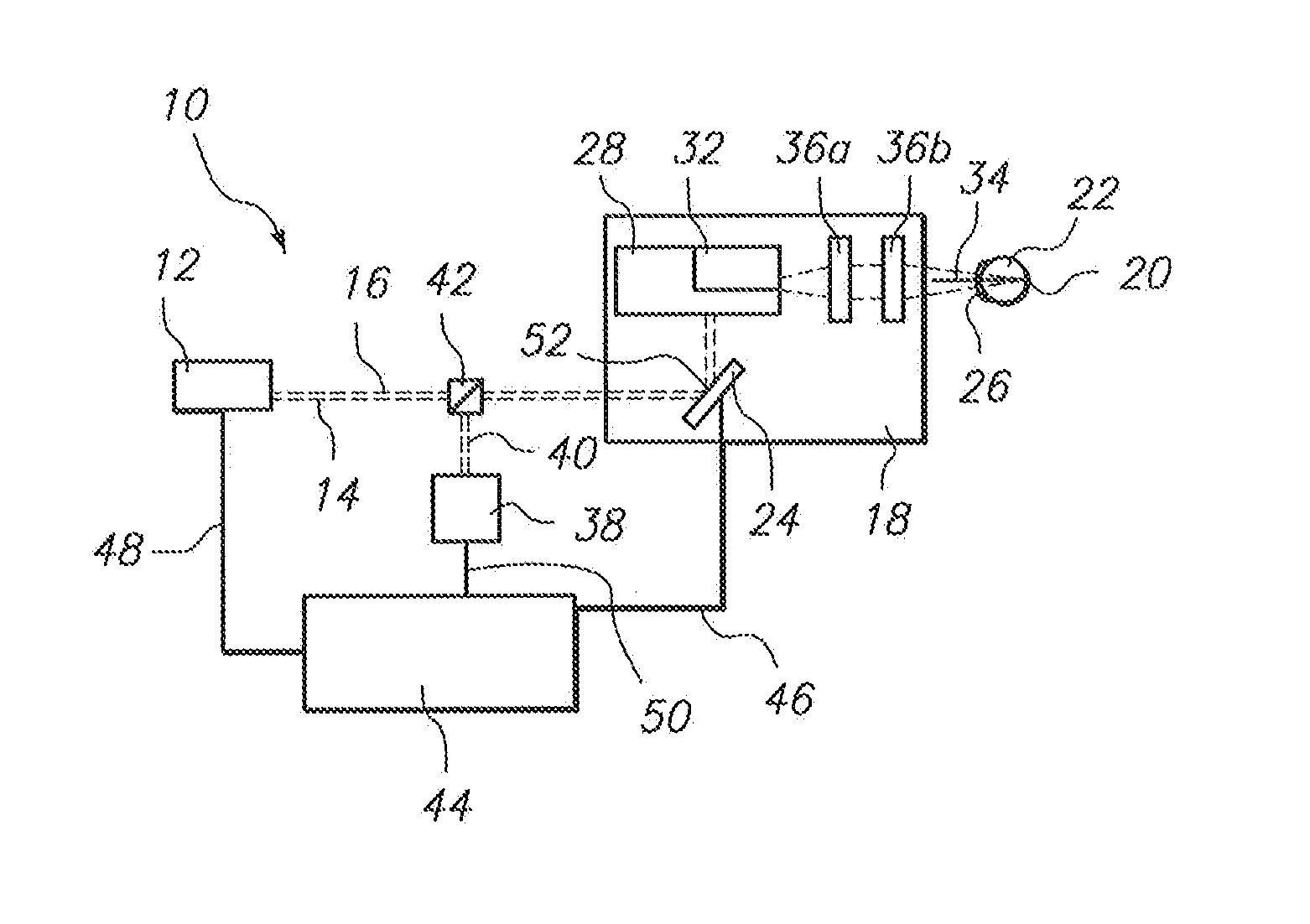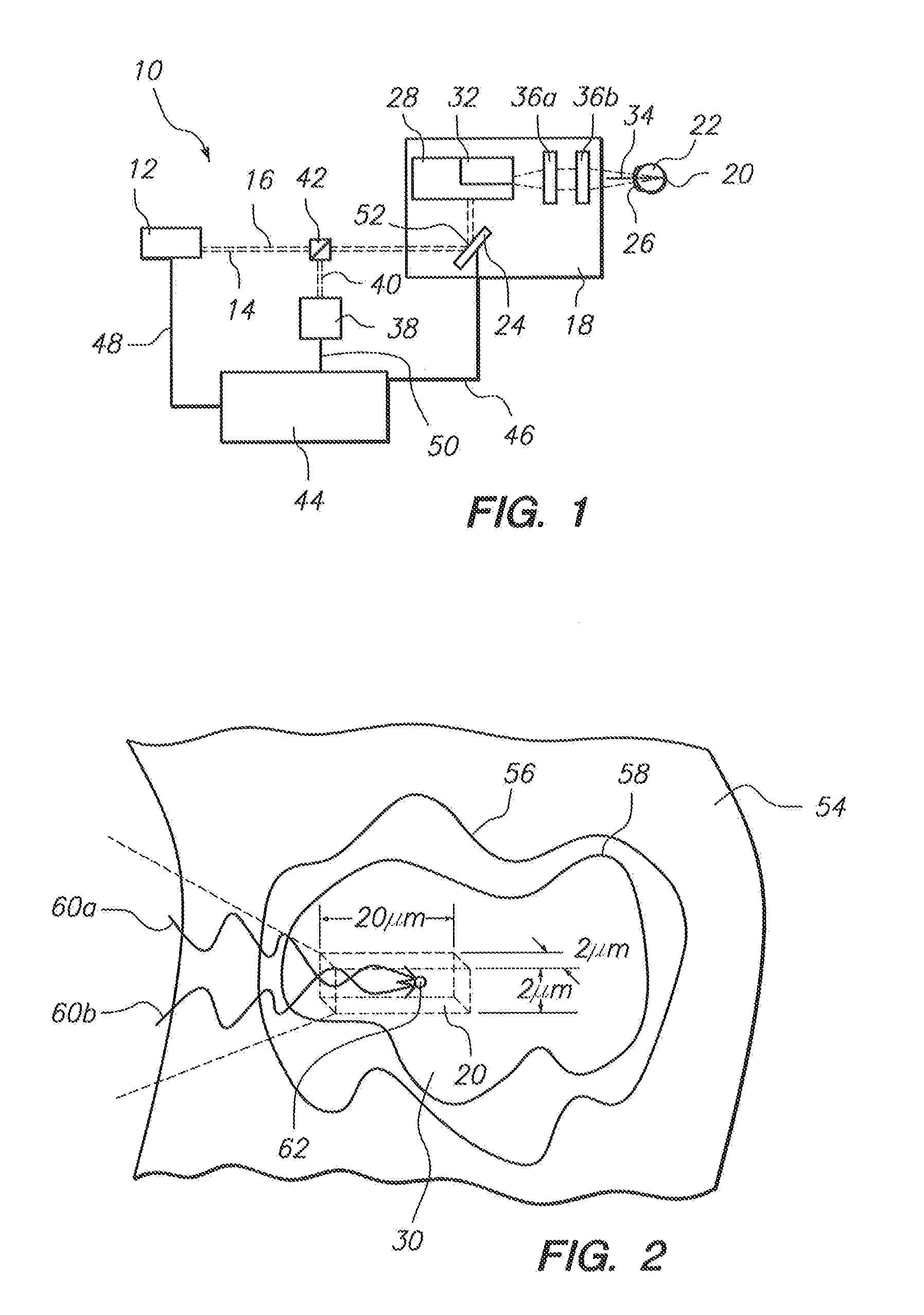Diagnostic Imaging for Age-Related Macular Degeneration (AMD) Using Second Harmonic Generation (SHG) Techniques
a technology of macular degeneration and diagnosis imaging, applied in the field of human eye age-related macular degeneration treatment, can solve the problems of limited treatment options for wet amd, no cure, and damage to the macular as it is displaced, and achieve the effect of effectively illuminated and treated, and without adversely affecting the surrounding healthy tissu
- Summary
- Abstract
- Description
- Claims
- Application Information
AI Technical Summary
Problems solved by technology
Method used
Image
Examples
Embodiment Construction
[0028]A system in accordance with the present invention is shown in FIG. 1 and is generally designated 10. As shown, the system 10 includes a laser source 12 for directing a laser beam 14 along a beam path 16. Specifically, the laser source 12 is a tunable, femtosecond (ƒs) laser source 12. More specifically, the laser source 12 generates a laser beam 14 having a wavelength of about 800 nm, a pulse duration in a range of about 200-800 femtoseconds, and a pulse energy of about 1 nJ.
[0029]Working in concert with the laser source 12 is an optical assembly 18, for focusing the laser beam 14 onto a focal point 20 in the eye 22. As contemplated by the present invention, the optical assembly 18 includes adaptive optics for more precisely focusing the laser beam 14. More specifically, the optical assembly 18 includes an active mirror 24 optically aligned with the laser source 12 for compensating the laser beam 14 as the beam 14 reflects off the mirror 24. As can be appreciated by the skille...
PUM
 Login to view more
Login to view more Abstract
Description
Claims
Application Information
 Login to view more
Login to view more - R&D Engineer
- R&D Manager
- IP Professional
- Industry Leading Data Capabilities
- Powerful AI technology
- Patent DNA Extraction
Browse by: Latest US Patents, China's latest patents, Technical Efficacy Thesaurus, Application Domain, Technology Topic.
© 2024 PatSnap. All rights reserved.Legal|Privacy policy|Modern Slavery Act Transparency Statement|Sitemap



